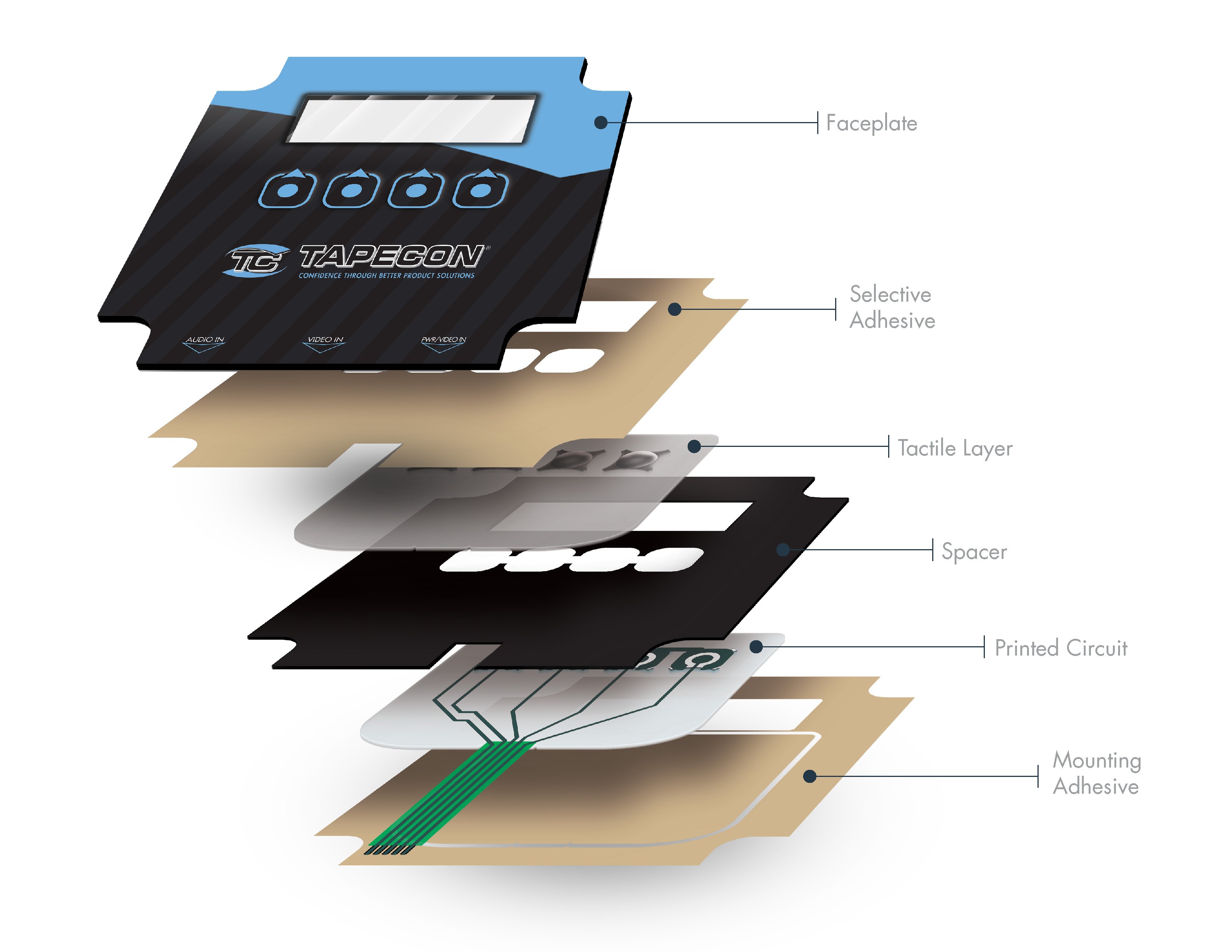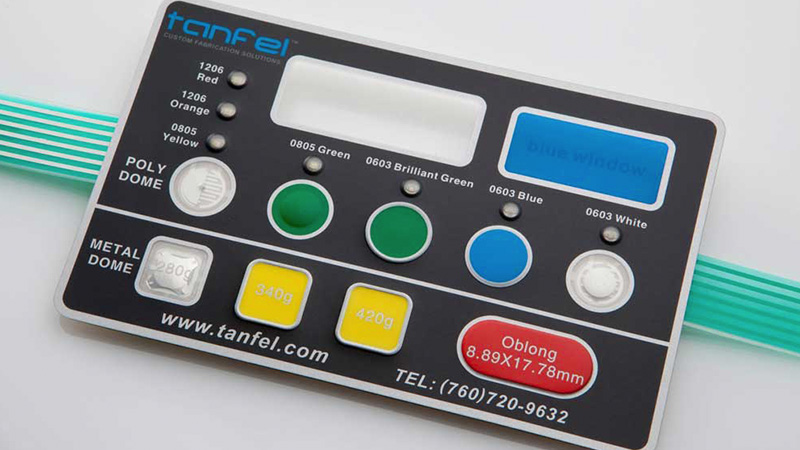The Role of Membrane Switches in Improving Product Durability and Performance
The Role of Membrane Switches in Improving Product Durability and Performance
Blog Article
Why Membrane Layer Switches Over Are Necessary for Sturdy Control Solution
Membrane layer switches play an essential function in guaranteeing the sturdiness and reliability of control systems throughout various markets. As we discover the complex advantages of membrane layer switches, it ends up being noticeable that their value transcends mere capability, affecting user experience and functional performance.
Introduction of Membrane Buttons
Membrane layer switches are functional and reputable parts typically used in different digital control systems. These buttons include numerous layers, consisting of a visuals overlay, a spacer layer, and a printed circuit layer. The graphic overlay offers both useful and visual design, while the spacer layer guarantees that the switches are activated just when pressed. The printed circuit layer consists of conductive traces that complete an electric circuit when the membrane layer is pushed, enabling the device to respond to user inputs.
Membrane layer switches are usually preferred in applications needing a small and light-weight layout, making them perfect for portable gadgets, medical tools, and commercial machinery. They can be personalized to meet particular customer needs and can integrate numerous functions such as backlighting, tactile comments, and multiple shades. Membrane layer switches are immune to dirt, dampness, and pollutants, making them ideal for environments where sturdiness is important.
Benefits of Sturdiness
In several applications, the durability of membrane layer switches offers significant benefits that improve their total performance and dependability. These buttons are designed to withstand severe atmospheres, making them optimal for usage popular conditions such as high humidity, extreme temperatures, and direct exposure to chemicals. Their durable building helps to avoid damage from physical impact, guaranteeing durable performance and minimizing the need for constant replacements.
In addition, membrane switches are immune to damage, which is vital in applications where frequent interaction happens. This longevity converts to lower upkeep costs, as companies take advantage of minimized downtime and fewer solution interruptions. Additionally, the encapsulated design of membrane layer switches safeguards internal elements from dirt and dampness ingress, more adding to their life expectancy.
An additional benefit is their capability to keep regular performance with time. With a high resistance for mechanical tension, these switches maintain their tactile responses and electric integrity, guaranteeing customer contentment. Inevitably, the resilience of membrane switches not just improves functional effectiveness but additionally promotes confidence in their dependability, making them a favored selection for control systems throughout different fields.
Applications in Numerous Industries
Resilient control systems employing membrane switches discover substantial applications throughout a range of industries, each taking advantage of the special qualities these buttons provide. In the medical industry, membrane buttons are vital for devices such as patient screens and analysis devices, where dependability and ease of cleaning are paramount. Their resistance to wetness and pollutants ensures they maintain capability in sterilized settings.
The auto industry leverages membrane layer switches for dashboard controls and infotainment systems, where they see this page offer streamlined, low-profile interfaces that enhance customer experience. These buttons are likewise designed to withstand severe conditions, consisting of exposure to severe temperature levels and vibrations.
In commercial setups, membrane layer buttons are commonly utilized in machinery control board, providing responsive comments and longevity essential for high-usage applications. Their ability to withstand chemicals makes them appropriate for producing atmospheres where spills and contaminants are frequent.

Consumer electronics, such as cooking area home appliances and remotes, likewise make use of membrane buttons for their adaptability and cost-effectiveness. Generally, the flexibility and robust nature of membrane switches over make them important across various markets, making certain efficient operation and durability in control systems.
Design and Aesthetic Charm
While capability is critical, the design and visual allure of control systems geared up with membrane layer buttons play a vital function in user involvement and overall experience (membrane switch). The aesthetic style of these buttons can substantially influence next page user perception and communication. A properly designed membrane button boosts the good looks of the gadget, making it extra appealing to customers and fostering a link in between the customer and the product
Membrane switches provide a lot of flexibility in layout, permitting manufacturers to customize graphics, colors, and textures to align with brand name identity and item looks. The use of vibrant colors and distinctive patterns can draw interest, while tactile comments can reinforce the customer's communication with the device. In addition, the capability to incorporate LED indicators and backlighting into the membrane layer switch style provides both useful and aesthetic benefits, boosting presence and functionality in numerous atmospheres.

Enhancing Customer Experience

Furthermore, membrane layer buttons can be customized to incorporate visual user interfaces, improving functionality by presenting information in a clear and intuitive way (membrane switch). This modification can include symbols, labels, and shade coding that overview individuals through complex functionalities effortlessly. In addition, Extra resources their convenience permits integration in various environments, ensuring consistent efficiency whether in commercial equipment or customer electronic devices
The resilience of membrane buttons additionally plays a vital duty in user experience. By holding up against extreme problems and prolonged usage, these switches reduce the probability of system failures, hence promoting reliability and individual self-confidence. Eventually, the tactical use of membrane layer switches over not only elevates performance however additionally dramatically improves user communication with control systems, making them a crucial component in modern-day layout.
Conclusion

Report this page